1 Introduction
"Media" (媒体) or "media" means the carrier of information, that is, all forms and material tools that carry and transmit information from the communicator to the recipient during the dissemination of information. Although starting from this concept, the media function of the building skin has existed since the beginning of architectural history. It displays and conveys specific information in the form of plane graphics or three-dimensional sculpture. However, when information dissemination transcends traditional media, digital media such as the Internet and computers spread at an unprecedented rate, covering all areas of our lives, bringing a new generation of visual media art revival. Buildings, as the "container" and living machine of people's living and living, are inevitably influenced by the trend and become a member of digital media art. In recent years, as a building skin that is gradually independent of building functions and building structures, it has increasingly assumed the function of media, penetrated into various symbols and information, and has strong post-media characteristics, such as digital, two-way communication, and openness. Sex. “Media Facade†refers to a building skin based on contemporary digital technology that conveys visual information and has distinct digital media characteristics.
There are two main types of technical means to achieve media façade. One is to use physical components to form information images, and to realize the change of façade shape through physical or environmental influences, such as FLARE-FACADE in Germany or Winterthur in Switzerland. TechnoramaSwiss Science Center. 1 The other type is the technical means of constructing visual signals and transmitting information by artificial light to realize the media skin, namely the "media facade lighting technology" discussed in this paper.
2 media facade and LED lighting
Compared to physical or static or dynamic media facades, media facade lighting technology creates a new way of connecting between the architectural interface and the digital space through digital lighting. First, media lighting technology uses a dimmable light source to change its brightness, color and other factors to create a changing and coherent image that conveys continuously variable visual information. Second, through digital control technology, media facade lighting technology will be realistic The world is connected to the digital world, transforming the building skin into a media interface. This media interface is different from the personal computer used by individual users. It has an unprecedented openness to the public and even the entire urban population. In addition, it provides the possibility of interaction, allowing people to “respond†to information, even by The public crowd completes the content and form of the façade media, which has the characteristics of two-way or even multi-directional communication compared with the traditional building skin.
Media facade lighting technology provides designers with a powerful design space and a richer expression of vocabulary. In those outstanding media facade designs, lighting technology has become an integral part of these projects, and it is difficult to define which parts are purely artistic creations and which parts are completely technical designs. The lighting technology, image display technology and integrated design with the building facade directly affect the final effect, and also have an important impact on the interactivity and city value of the media building. It is the key component of the media facade.
In order to realize continuously changeable visual information images, the light source used for media illumination must be a light source that can be dimmed or frequently switched. The available light sources are halogen lamps, fluorescent lamps, and LEDs. Although the halogen lamp is convenient for dimming, it can be instantly lit, allowing frequent switching, but its energy consumption is high and its service life is short, which is often used in some temporary projects. The fluorescent lamp can also be changed in brightness by the dimmable electronic ballast. If color change is required, a plurality of light sources of different colors need to be set to be mixed. Compared with halogen lamps and fluorescent lamps, the LED light source is small in size, thus providing more design possibilities, and a single LED can be used as a very small pixel to achieve high-precision images. It can also be combined with a concrete node design. The surface material realizes low-pixel image; its color change is rich, RGB LED (one LED is composed of red, green and blue chips) can realize full color change of single LED, or can be red, green and blue respectively. The color LEDs are mixed and discolored, so the media façade with LED illumination can not only express through the light and dark relationship, but also display richer image information through color; in addition, the compact size also makes the LED lighting fixtures better and The combination of building components enables a high degree of architectural design. In terms of control, the media façade of LED lighting can realize the graphical export control mode, that is, the lighting interpretation of the actual media façade is synchronized with the graphic playing of the control platform through the control system. It can realize the brightness control of each LED luminaire, and solve the problem of brightness difference between new and old lamps; its energy consumption is small, especially as a pixel for direct viewing. LEDs are mostly used as low-power chips, and the power of single chip is less than 1W, even if the number is large, the lighting energy consumption can be greatly reduced compared with the traditional floodlighting.
The many characteristics of LED make it have obvious technical advantages and adaptability in media façade lighting, so it has become the first choice for media façade lighting and is being used more and more. It can even be said that the rapid development of LED lighting technology has promoted the widespread application of media facades to some extent.
3 visual elements of media image display
3. 1 resolution
How many pixels do you need to construct a media facade? Maybe there is no standard answer at all. It can be 900 pixels in the KPN building in Rotterdam, 180,000 pixels in the UNIQA building in Austria, or 1 million pixels in the Grand Lisboa building in Macau. (Figure 1 ~ Figure 3) Although higher resolution means more clarity and more detail, high pixels are not necessarily required. The higher resolution and investment of the GrandLisboa building clearly does not surpass the UNIQA building in terms of artistic effects. Only 900 pixels of KPN building through the clever layout of multimedia designers and network open interactive design, also formed a rich and interesting performance on the building's welcoming facade, graphics, text, animation, computer games, etc. Wait, become a fascinating urban landscape. The media facade is different from the electronic display screen, and the resolution is not the decisive factor of the artistic effect of the media facade. The number and density of pixels should be reasonably selected according to the specific architectural characteristics and viewing requirements.
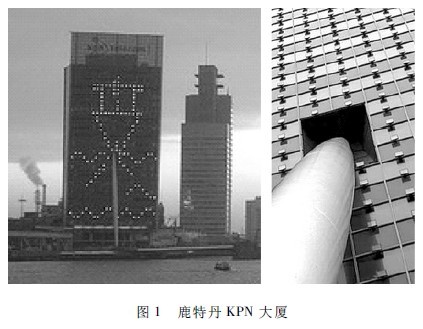

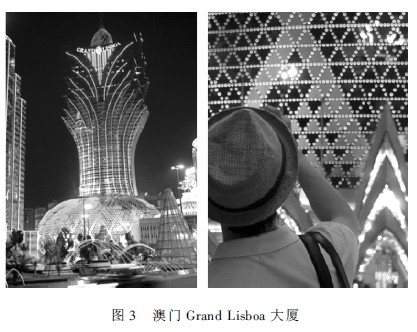
3. 2 pixel size and spacing
The pixel may be formed as an independently controlled light source or as a surface carrying light. Therefore, the size of the pixel varies greatly, from one window of 1, 2 square meters to one LED of 1, 2 square millimeters. Since the media content is composed of a single pixel, the size of the pixel directly affects the image composition of the media facade and the viewer's acquisition of the media information. Generally, a large pixel point corresponds to a lower resolution, and the observer is also required to view from a distant distance in order to connect the isolated pixel points and feel the overall image.
If the pixel points of the media facade are directly composed of a single lighting fixture, the LED can achieve the smallest pixel size, but correspondingly obtaining the same size of the media facade, more LEDs are needed, and the cost is higher. Therefore, it can be considered to use the building member as a light-bearing surface, such as a sunshade on a window, a sunshade member, or even a special façade plate, and can also achieve half the effect. Such as the triangular visor of the Richard Desmond Children's Eye Centre in London, the coated glass disc at the Galleria Mall in Seoul, the glazed glass at the Kaohsiung Da Li Boutique, or the facade metal of New World Trade in New York. The net uses the building's own components combined with the lighting design to form unique pixel points, and the entire media facade form also has more distinct personality characteristics. (Figure 4 ~ Figure 7)
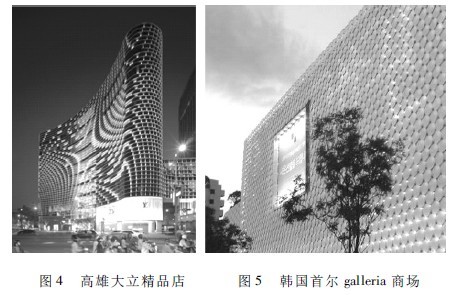
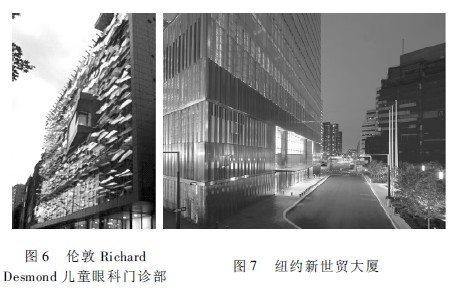
3. 3 brightness
Of the various artificial light sources, only the LEDs are visible under direct sunlight. Therefore, if the media facade needs to be performed during the day, it should consider the use of direct-view LEDs. However, too high brightness may adversely affect the surrounding environment and traffic at night, but it is necessary to appropriately lower the brightness of the LED according to the situation. Especially in the near-human scale, too high brightness can even cause disability glare. If some special materials are used for shielding in front of the light, the surface brightness can be appropriately reduced, and even a partial light mixing effect can be produced. For example, Chicago's Millennium Park Crown Fountain, the glass brick wall in front of the display softens the surface brightness of the LED particles, making people feel too much at night even at very close distances. Stinging. (Figure 8)

The choice of brightness of the pixels on the media facade is a complicated problem, considering the brightness level of the surrounding environment and the viewing distance of the people. In addition, the size of the media facade and the density of the pixels will be The final visual experience has an impact. Therefore, field testing and commissioning during installation are necessary.
3. 4 color or hue
LED lighting technology can form millions of colors, so the choice of color or hue of the LED media facade depends entirely on the design intent. When choosing LED for architectural exterior lighting, the owner or designer will choose the effect of discoloration. Of course, a richly colored image can quickly catch the eye. In today's increasingly colorful urban night scenes, colored light is no longer so over-excited, and excessive change leads to visual fatigue. While some designs decisively abandon the characteristics of LEDs that can be discolored, the use of a single color is impressive. The 56m-high building facade of the Chanel Building in Ginza, Tokyo, is horizontally lined with LED lights that also use a single white color. The black and white pattern presented is highly consistent with the color positioning of the brand. The video content specially designed by the artist fully demonstrates the brand connotation of CHANEL and also shows the strong expressive power of black and white patterns. The "Wall of Africa" ​​of the African Pavilion at the Zaragoza Expo in Spain is all based on a 5400k white LED. The contrasting black and white image makes the entire building façade more artistic and leaves the audience with more room to imagine (Figure 9).
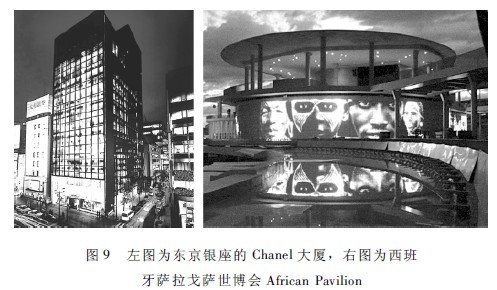
4 Building integration technology
The degree of building is a key factor in the media's façade and a determining factor in determining the media's façade. From the design point of view, the degree of architectural integration of the media facade is mainly determined by the degree of integration of the illuminator and the building components, the degree of integration with the façade material, and the fit of the media content and the building. Lack of integrated design with the building, the media display surface is just a large display installed on the building. Through the cooperation of architects and lighting designers, the media display surface is organically integrated into the building skin, and the combination of the two will become a brand new media facade.
4. 1 Integration of lighting fixtures and building components
To form a media facade that conveys information, media facade lighting typically requires a relatively uniform number of lighting fixtures to be installed on the building facade. In order to avoid the impact of the luminaire on the daytime landscape of the building, the way in which the building components of the luminaire are combined must be more fully considered. The relationship between the lighting fixture and the building skin is mainly as follows: The lamp is directly installed on the building skin, and the lamp is installed at the rear, directly below or below the skin material.
When the luminaire is directly installed on the building skin, the luminaire can be directly viewed. The combination of the luminaire and the building façade must be considered. Unless the viewing distance is very long, the luminaire scale is relatively small, which is not enough for the daytime landscape of the building facade. influences. There are also some building façade finished components combined with LEDs, which can be directly installed on the outside of the building façade to form a clear media image, and still ensure the transparency of the indoor line of sight, becoming an effective means to quickly and easily realize the media façade (Figure 10).

Or the lighting fixture can be separated from the building skin and installed on the rear or below of the façade plate for light projection, which can well conceal the lighting fixtures, has the least impact on the appearance of the building, and has a higher degree of construction. (Fig. 11 ~ 13) The visual effect of this type of lighting is influenced by the material of the building skin.
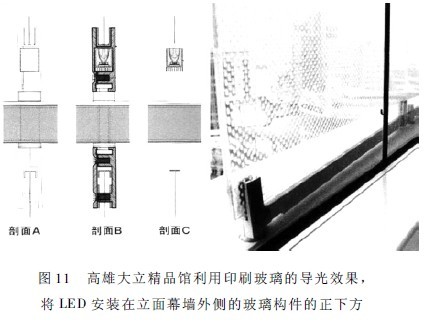

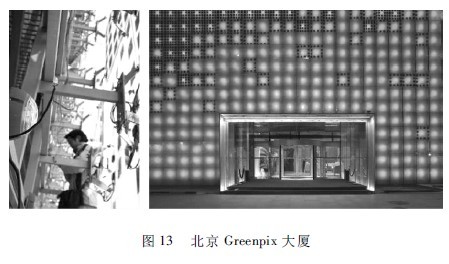
4. 2 Building skin material
In recent years, the building skin has gradually become the design focus, and various new materials have been boldly applied to the building facade to create different facades. Transparent or translucent, smooth or rough, metallic or woody materials bring more possibilities to the night illumination of the building. The combination of the façade material and the light in the media façade is more abundant. Change the visual effect.
After the illuminating device is placed on the transparent material, its optical effect will not change substantially, and a clear illuminating surface can still be seen at a close distance, so it is suitable for viewing at a medium-distance scale. Compared with the way of installing on the outside of the building skin, the lighting fixture is placed behind the transparent material of the skin to reduce the waterproof and weather resistance requirements of the lamp itself. However, because it can be seen directly, it is still necessary to consider the concealment of the fixture and the problem of integration with the construction. For example, the Uniqa Insurance Company Building in Vienna installed a unit assembly of 4 LED pixels at a distance of 8 cm on the outside of the vertical curtain wall between the double curtain walls. (Fig. 2) The daytime building remains the same, people can hardly feel the presence of lighting, and the nighttime LEDs are clearly visible through the transparent curtain wall glass, gracefully flashing on the building skin.
The translucent material provides a diffuse softening effect on the LED illumination points, allowing one or more LEDs to be mixed. The visual effect is softer, thanks to the occlusion of the façade material and the superposition of the optical effects of the façade material, making the visual effect more artistic and more popular with more architects. With the development of building materials technology, the combination of Priva-lite glass, coated glass, handmade beeswax blocks, printed glass, etc. and LEDs, the building presents another eclectic image. For example, the Priva-lite glass used in the Ginza Chanel building is transparent during the day and can become translucent after the night.
The LED light hidden behind it forms a soft black and white pixel on the glass facade. The newly-renovated entrance façade of the office building in Merck Serono, Switzerland, uses beeswax in its richly façade. Artists from Cologne manually joined the LED module into a 2500 × 500 × 300mm yellow beeswax block. Due to the nature of the material, the LEDs in the waxy module present a comfortable warm hue that fits better with the media theme of their lives (Figure 14).

For translucent building materials, media facade lighting uses more of the way of floodlighting, distributing light onto the building's skin members, which form the pixels of the media pattern. This type of illumination illuminates a larger façade area with fewer LEDs, but usually only forms a low-pixel elevation image. For example, the combination of 4330 round laminated glass and custom LED floodlights in Seoul Galleria (each lamp consists of 1 red, 1 blue, 2 green and 4 1W LEDs) (Fig. 5); or Kaohsiung Dalit, Taiwan The boutique is integrated with the laminated glass on the outside of the building's façade and the LED mounted on the lower edge of the glass (Figure 4).
It can be said that the façade material is the decisive factor of the lighting method used in the media façade. The color, texture and transparency will directly affect the final performance. When designing the media façade lighting, the material of the façade must be fully considered to realize the light and The interaction of materials can get the best results. The translucent façade material is more conducive to the performance of the media façade than the transparent material. On the one hand, it hides the LED luminaire well, and has no effect on the architectural daytime landscape even on the near-human scale; on the other hand, half The texture and color of the transparent material itself can be combined with the LED to create a richer visual effect.
4. 3 Media content and interaction
In addition to the integration of lighting equipment and building components, the performance of the media facade should also be consistent with the architectural attributes. Due to the development of lighting control technology, it is not difficult to centralize all the LED lighting fixtures on the building facade. As long as the animation or video that can be played on the computer can be displayed on the building facade. However, this technical advantage sometimes leads to deviations in design goals. At present, many "media facades" in China are too prominent in the LED itself, lacking the design that is organically combined with the building. The result is that a large advertising screen is installed on the facade of the building. In addition, its performance content lacks design, frequent information bombing will only cause excessive visual stimuli to cause visual attention loss, and lead to visual fatigue and psychological boredom.
In contrast, the outstanding case of the media façade has a special artistic design in the performance of the media content, and can fully express the attributes and functions of the building itself, forming an integral part of the main body of the building. For example, the media façade of Ginza Chanel, 12 months of the year, some important holidays and various special events of Chanel are equipped with theme story animations that are specially designed by the artist to highlight the brand characteristics, in conjunction with relevant sales strategies, although The same is the advertising method, because the artistic design makes people impressed and achieved better publicity. The office building of Merck Serono in Switzerland is based on the theme of life and corporate culture, and the vibrant African scene of the African Pavilion at the Zaragoza Expo constitutes another level of architectural skin.
In addition, in recent years, the media façade has also made many attempts in terms of interactivity, and has become one of the characteristics of media façade technology. Using inductive technology to transform the actual activities of the physical world on the media facade through digital transformation, resulting in instant interaction. For example, the interactive curtain wall lighting in Building 7, New World Trade Center, New York, through the infrared sensing in front of the building, the corresponding blue light on the building facade, greatly increasing the fun of the building, reflecting the building and the environment Dialogue. Figure 15 Even more, the touch screen is set at the foot of the building, which converts people's physical behavior (light weight) into different brightness colors and displays the signals in real time to the LEDs of the building's exterior wall. Through the open interactive workstation, the whole interactive process is displayed to the public, and the distance between the building and the viewer is broken. The viewer directly participates in the creation and becomes part of the performance of the work. (Figure 16) Or open-ended performance content, publicly collecting dynamic videos on the Internet, and conducting live broadcasts of their façades, thus increasing public attention.
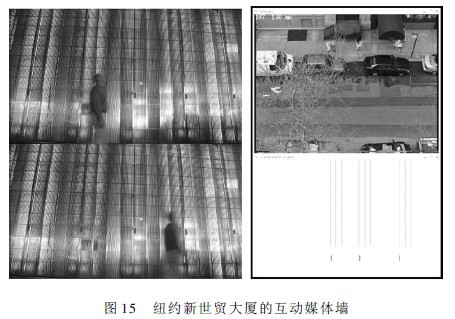
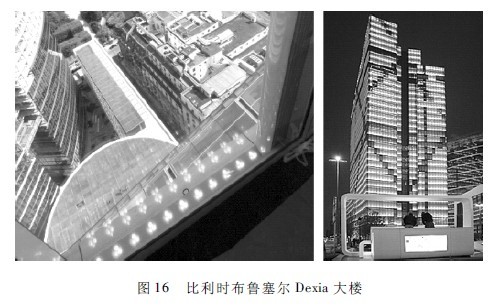
A Power Inductor,Alps Rotary Potentiometer,Potentiometer Imported,A Power Inductor Made Of Alps
DA CHENG MINGHUA LIMITED , https://www.alpsswitch.com